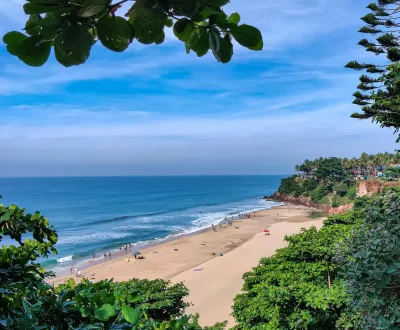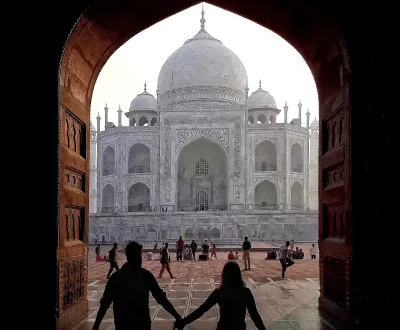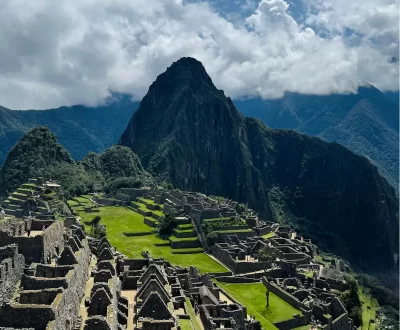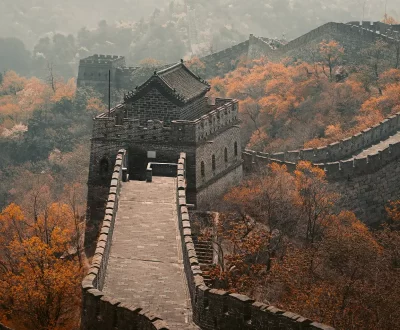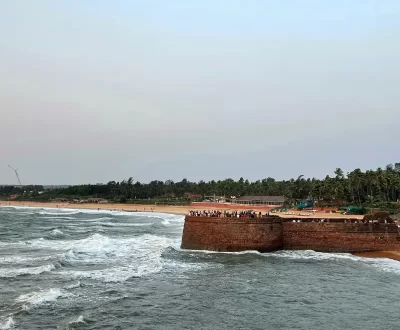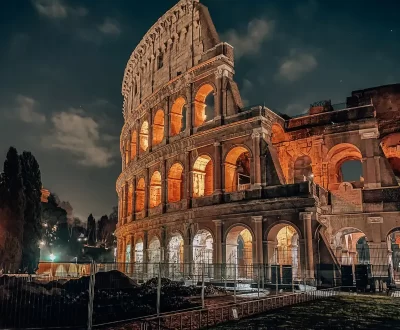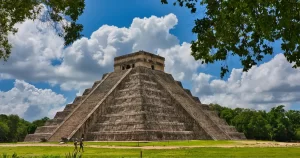
History of Chichen Itza showcases that it was one of the most advanced civilisations in its time & it still stands as one of Mexico’s most spectacular archaeological sites. Located on the Yucatan Peninsula, this remarkable city dominated the region during the Classic period and continues fascinating visitors with its sophisticated architecture and astronomical precision. A must visit place, if you want to experience Maya culture.
The Golden Age of Chichen Itza and the Maya Civilization
Chichen Itza was one of the most important centers of Maya civilization from 250 to 900 AD, during the Classic period. The city was very important to politics, culture, and religion. It was a major power center that controlled trade routes across the Yucatan Peninsula.
The site shows a mix of Maya and Toltec architectural styles. This is because the Toltec-Maya built most of the visible structures between 1050 and 1300 CE, when the two cultures were trading ideas and goods. During this time, the population of other parts of the Maya world was going down, which made Chichen Itza even more important.
The Pyramid of Kukulcan, El Castillo
The beautiful El Castillo pyramid, which is 79 feet tall and has perfect geometric proportions, stands in the middle of Chichen Itza’s main plaza. Spanish conquistadors called it “The Castle,” but its real name is the Temple of Kukulcan, which honors the feathered serpent god.
This building is a work of art that shows how well the Maya understood math and astronomy by how well it was built. There are 91 steps on each of the four sides, for a total of 364 steps. When you add the temple platform, you get 365 steps, which is the same as the solar year.
Alignments in astronomy and connections to calendars
El Castillo is a huge stone calendar that shows how the Maya understood the cycles of the stars. The pyramid’s orientation lines up with important astronomical events, like the sunset on its western face, which happens at the zenith passage.
The structure’s precise math helped Maya priests keep track of the seasons and mark the four solar events that happen every year: the winter solstice, the spring equinox, the summer solstice, and the fall equinox. This astronomical calendar told people when to plant and harvest crops and when to hold religious ceremonies all year long.
The Feathered Serpent Event
During the spring and fall equinoxes, thousands of people come to see Kukulcan come down the northern staircase of El Castillo. When the sun goes down, the shadows from the terraces of the pyramid make a snake-like pattern that looks like it’s slithering down the stairs.
The shadow finally reaches the carved serpent heads at the base of the pyramid, making it look like the feathered serpent god is coming down from heaven to earth. The effect can be seen for about a week before and after each equinox.
Temple of Warriors and the Ball Court
The Temple of Warriors has detailed columns and carvings of Maya gods and warriors, which shows that Chichen Itza had a strong military culture. This big building shows how important the city was politically and militarily at its height.
The Great Ball Court at Chichen Itza is the biggest in the Maya world, measuring more than 500 feet long. These ritual ball games were very important to the Maya religion, and they may have involved human sacrifice, which shows how serious the Maya ceremonial sports were.
Advanced building methods by the Maya
Maya builders used advanced building techniques to make the monuments at Chichen Itza that still stand today. Archaeological digs have shown that El Castillo has two older pyramids inside it, which shows how Maya leaders built on top of other buildings.
The innermost pyramid, which was built between 550 and 800 CE, has only one stairway and altar. The middle pyramid, which was built between 800 and 1000 CE, has nine platforms and is home to human remains, a jade-studded jaguar throne, and a Chac Mool sculpture.
Religious and Ceremonial Importance
Chichen Itza had many religious uses, including watching the stars and making ritual sacrifices. At the northern end of the site, there was a natural sinkhole called the Sacred Cenote. People made offerings to the rain gods there, including valuable objects and even people.
Recent discoveries suggest that El Castillo might be built on top of another cenote, which could make it an axis mundi in Maya cosmology, linking the earth, heaven, and the underworld. This would make the pyramid’s religious significance higher than what was previously known.
Hidden Secrets and Archaeological Finds
Modern technology keeps uncovering Chichen Itza’s secrets. For example, non-invasive imaging has found hidden structures inside El Castillo. Some of these discoveries show that there is a cenote under the base of the pyramid, just like the Sacred Cenote.
Chichen Itza’s limestone bedrock is connected to underground water systems and cave networks. The Maya thought that these formations led to Xibalba, the underworld. These geological features had an effect on the city’s sacred geography and religious practices.
Travel Guide to Chichen Itza
Every year, millions of people come to Chichen Itza to see the amazing Maya architecture for themselves. The site is open every day, and early morning visits are best to avoid crowds and heat while getting the best photos.
Because so many people come to see the feathered serpent phenomenon at Equinox, you need to plan ahead. The site has guided tours that explain Maya astronomy, architecture, and religious practices that make the ancient city come to life.
Protection of UNESCO World Heritage Sites
UNESCO named Chichen Itza a World Heritage Site because it is an important example of Maya civilization that has universal value. The designation helps protect the site and encourages conservation efforts and tourism that is good for the environment.
The site’s inclusion in the New Seven Wonders of the World in 2007 brought it more attention around the world and showed how important it is to keep this unique cultural heritage safe.
This gives us a lot of ideas of past & how our ancestors lived.
“Chichen Itza is the best example of Maya architecture, astronomy, and city planning.” This amazing archaeological site keeps giving us new information about one of the most advanced civilizations in the Americas. It also inspires modern visitors with its mathematical accuracy and stunning architecture. Chichen Itza is a place that will take you on an unforgettable journey through Maya genius that spans over a thousand years. Whether you’re interested in ancient astronomy, religious symbols, or new building techniques, you’ll find something to enjoy there.
Want to read more about Chichen itza
Wait What? don’t miss reading more about the other seven wonders of world
2. Taj Mahal
3. Machu Picchu
4. Petra
6. Colosseum
More from our blog
See all postsRecent Posts
- Places to visit in Varkala 3 September, 2025
- Taj Mahal the Monument of Love 3 September, 2025
- Lost City of the Incas Machu Picchu Peru 3 September, 2025

